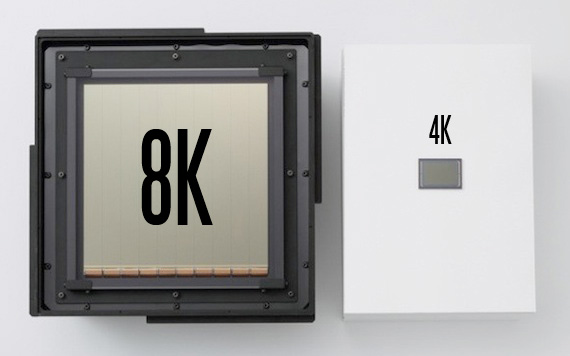
Japan’s national broadcast corporation NHK has developed a large CMOS 8K sensor for Super Hi Vision.
At 21.5mm x 12.1mm it is the size of Super 35mm when cropped to 16:9, and does 120fps at a resolution of 7680 x 4320.
At the IFA show in Berlin, and at CES, Sharp displayed an 8K TV. The technology is already developed, at a time where 4K is barely on the market.
Developed at the Shizuoka University, the sensor uses a similar technique to the GH2 in that it transforms analogue data into digital onboard the sensor itself, resulting in a fully digital readout occurs at a rate far closer to light speed.
The sensor only consumes 2.5 watt, making it very power efficient. For comparison, a typical consumer Samsung LED backlit TV consumes 50 watt.
8K belongs to the UHDTV standard (Ultra High Definition) which will be the successor to 4k. I’m expecting 4k to have quite a short shelf life before 8K comes in, and then a long plateau.
Also: the world’s largest digital camera announced
3.2 gigapixels. 640mm sensor. It is not something you’ll find in a typical camera. This camera has been developed for a telescope
The size of a small car, the LSST camera has vacuum pumps for cooling!
It is actually a mosaic of large 16MP wafers that make up the entire 3.2 gigapixel sensor. But the data processing power and the skill in which the sensors are knitted together is what makes it truly spectacular.


